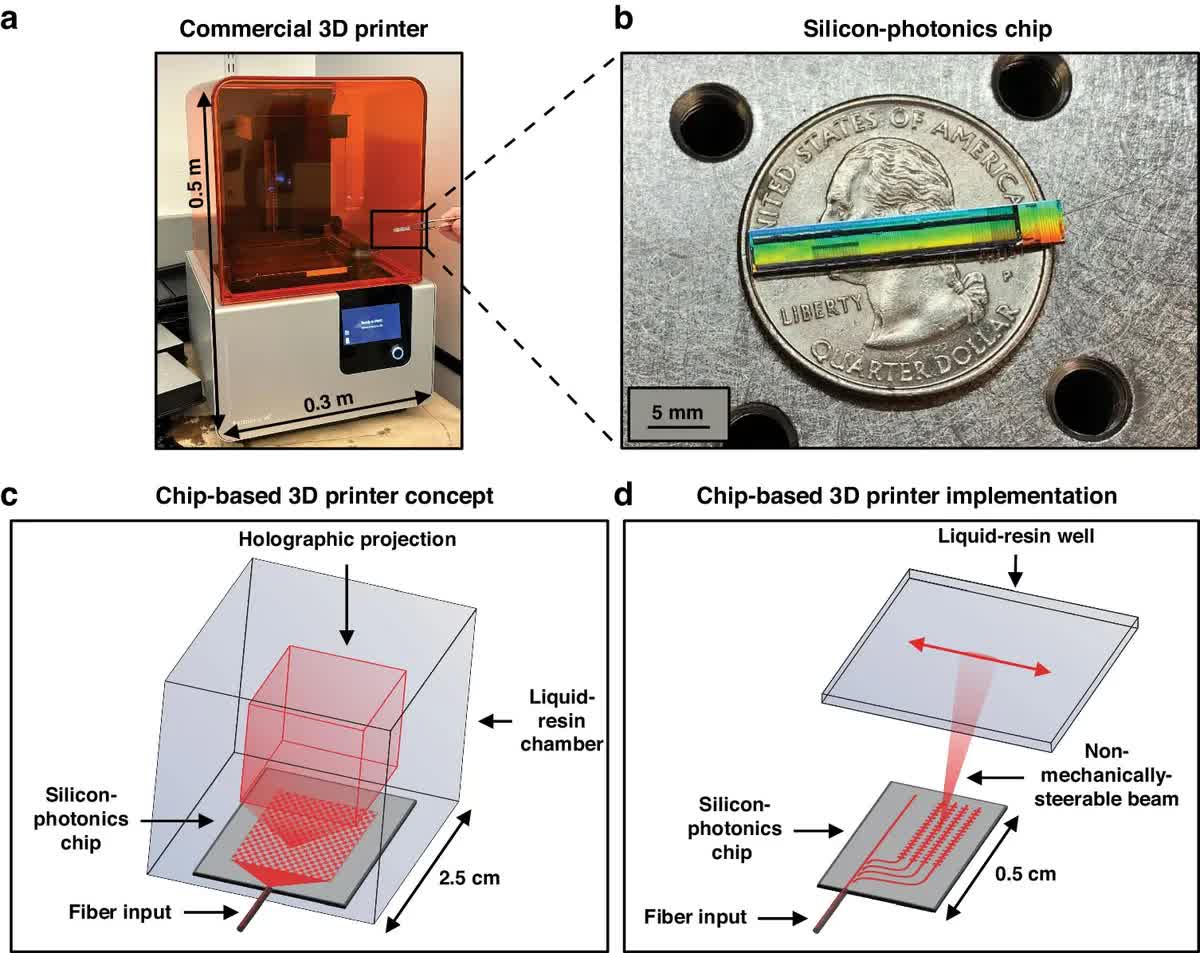Forward-looking: In a breakthrough that could revolutionize how we think about 3D printing, engineers from MIT and the University of Texas at Austin have created a fully functional 3D printer that fits right in your palm.

The 3D printer is no larger than a coin and has the potential to bring rapid prototyping capabilities virtually anywhere. Imagine quickly printing a custom part for your bike or even medical equipment while on the go.
Making this possible is an ingenious millimeter-scale photonic chip that can emit programmable light beams into a reservoir of light-curable resin. When the light hits the resin, it rapidly solidifies into a user-defined 3D shape.
The MIT team's expertise in silicon photonics allowed them to create integrated optical phased arrays on the chip – essentially microscopic antennas that can steer light beams by modulating the speed of the optical signals running through them. This beam-steering capability is what enables the 3D printing magic.

The antenna design also eliminates the need for motors to move the beam's focal point, resulting in a printer without moving parts that saves space. The device features 160 optical antennas, all fitting within a US quarter-sized footprint.
However, the visible light wavelengths required for this technology initially posed a challenge. Researchers at UT Austin addressed this by developing specialty resins optimized to cure under visible light exposure. This innovation was the missing link needed to make chip-based 3D printing viable.
With their proof-of-concept complete, the researchers now have a larger vision: developing chips that can generate entire 3D holographic light patterns to rapidly print complex volumetric objects in one go. The potential applications are staggering – from emergency repairs by first responders to printing medical devices on-demand.

MIT Professor Jelena Notaros said the system is completely rethinking what a 3D printer is. "It is no longer a big box sitting on a bench in a lab creating objects, but something that is handheld and portable. It is exciting to think about the new applications that could come out of this and how the field of 3D printing could change."
If this coin-sized 3D printing technology can be developed into a commercial product, it could decentralize and democratize on-demand fabrication like never before.
Further details about the research can be found in a paper published in the journal Nature.
At the other end of the 3D printing spectrum is another device unveiled in April. Dubbed "Factory of the Future 1.0," it holds the Guinness World Record for being the world's largest 3D printer and can print objects as large as 96 feet long, 32 feet wide, and 18 feet high – at a rate of up to 500 pounds per hour.
Researchers shrink 3D printer into a coin-sized, go anywhere chip